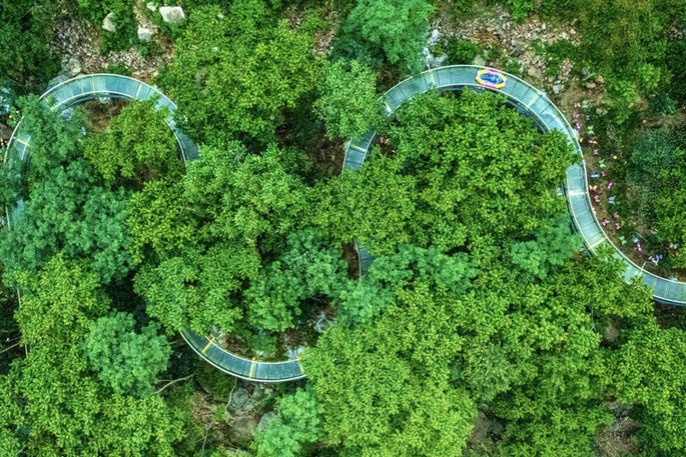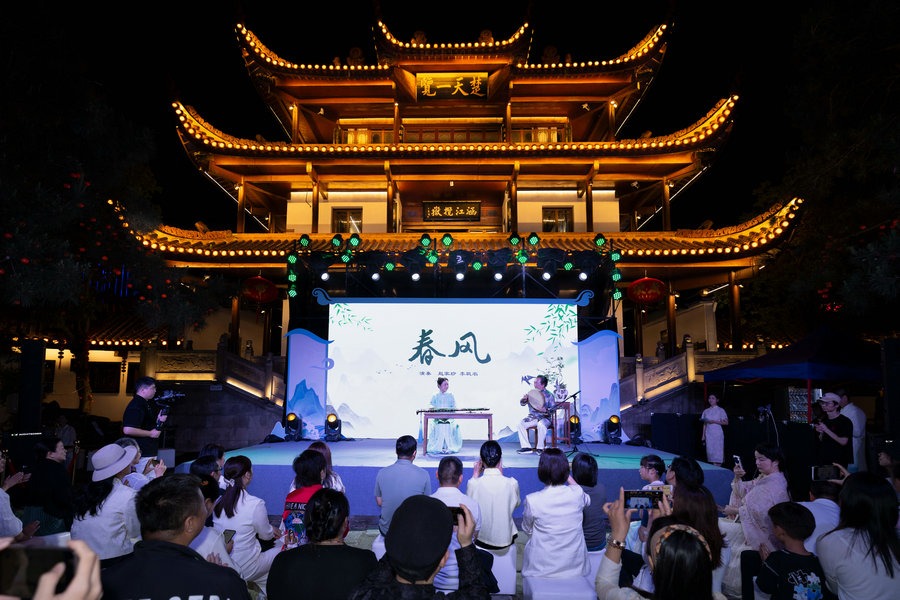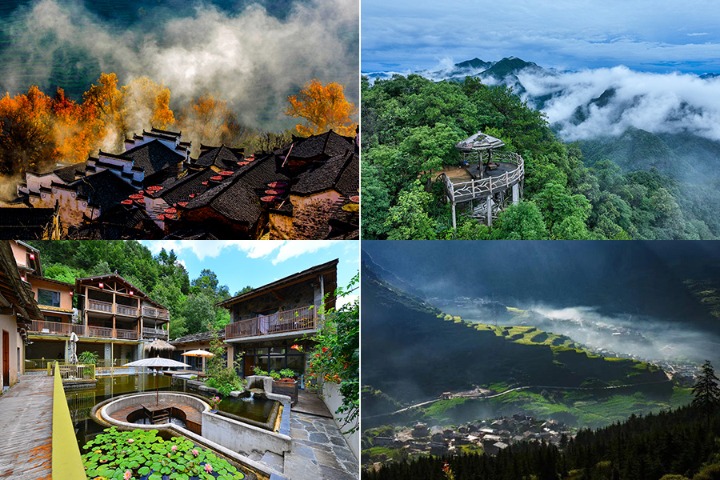CRUISING for INSPIRATION
Travelers experience the Yangtze River's vast cross-provincial landscapes by sailing on tourist vessels, Xu Lin and Liu Kun report in Yichang, Hubei.

Visitors enjoy the stunning scenery of Kuimen Gate, the very landscape printed on the back of China's 10 yuan ($1.4) banknote. The gate, a strategic gateway to Qutang Gorge, has commanded great military significance since ancient times. Its narrow cliffs and perilous currents create an impassable natural terrain that builds a fortress to contain the Yangtze's upper reaches.
Chongqing's Fengjie county has gained its reputation as "the poetry city of China" due to the countless poems depicting the formidable landscape of Kuimen Gate and Qutang Gorge, and the region's rich folk customs.
Tang Dynasty (618-907) poet Du Fu resided in Kuizhou (today's Fengjie) for about two years. Despite battling chronic illnesses and financial challenges, he composed over 430 poems, which marked a prolific peak in his literary career.
In Kuizhou, he climbed to the top of the White Emperor City and penned a literary gem, giving voice to his exile's bitterness in old age, unfulfilled ambitions, solitude, and a homeland in turmoil.
Today, cruise ship guests can go on the shore and ascend the White Emperor City's 365 steps, capturing different perspectives of Kuimen Gate.
On day four, the vessel docks at the Fengdu Ghost City scenic area on Mingshan Mountain in Fengdu county, the last destination before arriving at Chongqing's Chaotianmen Port the next morning.
Song Dynasty scholar Su Shi once climbed the mountain, considered an auspicious place of Taoism, and wrote a poem hailing its scenery.
Ancient Chinese people believed that souls journeyed to the netherworld after death, which was embodied by the ancient temples, halls, and sculptures of judges in hell, in the ghost city.

































